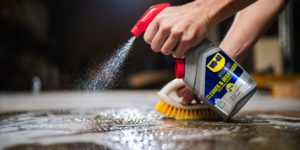Manufacturing Engineers: Holistic Heroes of Safety
Phil La Duke of Rockford Greene explains why the skills and tools of this engineer are essential to the creation of a safe and predictable workplace that improves process capability by reducing variation in each stage of the product lifecycle.
Posted: August 16, 2012
The skills and tools of this engineer are essential to the creation of a safe and predictable workplace that improves process capability by reducing variation in each stage of the product lifecycle.
Worker safety begins with manufacturing engineers who design the processes that workers will follow to do their jobs. Manufacturing engineers lay out the foundation upon which workplace safety is built. By designing jobs that can be done safely and economically, these engineers not only prevent injuries, but they also ensure peak efficiency and productivity.
In the course of their duties, manufacturing engineers are charged with planning and coordinating manufacturing processes in industrial settings. Manufacturing engineers collaborate with design engineers to use a variety of tools to make the job of production easier and safer to do. Two such tools are Design for Manufacturing and Design for Assembly (DFA), methodical approaches to product and process design. Design for manufacturing is also called Design for Manufacturability (DFM). DFA is the practice of considering the best (including safest, of course) method to assemble a product when designing its functionality.
These terms are so similar that many people now abbreviate the two as DFMA. The simple concept of considering the conditions in which a product will be manufactured (in terms of procedural techniques) and assembled before finalizing the process specifications can profoundly improve the safety of the workplace. Many of the decisions that impact the workplace layout and safety parameters are actually made in the design phase of the product lifecycle.
In this phase, engineers have the greatest control over the process. Changes or improvement to the process design cost the least at this stage. As the product lifecycle advances from the design phase to the actual launch on the shop floor, the engineer gradually has less control over the process and changes are more difficult and costly to make.
Many decisions that the manufacturing engineer makes in this early stage can have lasting – even permanent – repercussions for the safety professionals. Strict adherence to the DFMA guidelines can prevent the very dangerous and inefficient process designs that continue evolving and are in continual need of retrofits and tweaks. These sorts of suboptimal changes create process variability that create chronic hazards and process variability that injure workers and sap productivity and quality.
In addition to their role in product and process design, manufacturing engineers are also responsible for continually improving manufacturing processes. In this capacity, they bring their knowledge of manufacturing manpower, materials, methods, machines, environmental analyses, and quality control models to bear on production issues. Most manufacturing engineers view worker injuries as process failures (the process is not designed to deliberately hurt workers) and waste, and will use specialized tools to eliminate the hazards likely to hurt workers.
















